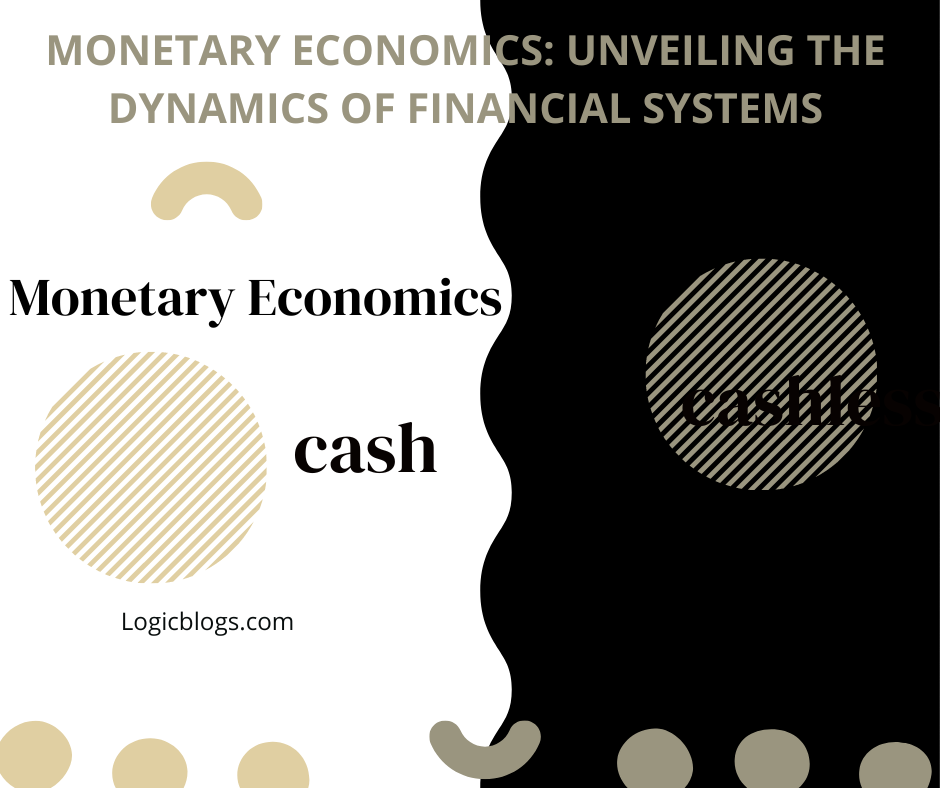Introduction
Embarking on the fascinating journey of Monetary Economics opens doors to understanding the pivotal role played by monetary policies in shaping economic landscapes. From central banking to currency dynamics, this article delves into the core principles that govern financial systems.
Monetary Economics in a Nutshell
In this section, we’ll provide a concise overview of Monetary Economics, highlighting its significance and fundamental concepts. From money supply to interest rates, grasp the basics that form the backbone of economic stability.
The Evolution of Money
Trace the historical journey of money from barter systems to modern-day digital currencies. Understand how the concept of currency has evolved and adapted to meet the changing needs of societies.
The Barter System’s Transition to Fiat Currency
Explore the transition from barter systems to the establishment of fiat currency. Uncover the reasons behind this shift and the impact it has on the stability of modern economies.
Central Banks and Their Role
Delve into the pivotal role played by central banks in the realm of Monetary Economics. Understand how these institutions influence interest rates, control inflation, and maintain financial stability.
Interest Rates: The Heartbeat of Monetary Policy
Examine the intricate relationship between interest rates and monetary policy. Gain insights into how central banks use interest rates as a tool to regulate economic growth.
Inflation and Deflation Dynamics
Unravel the complexities of inflation and deflation, exploring their causes, effects, and the delicate balance central banks strive to achieve to ensure economic equilibrium.
Quantitative Easing: Unveiling Extraordinary Monetary Measures
In times of economic uncertainty, central banks may resort to unconventional measures like quantitative easing. Understand the implications of such strategies on the broader financial landscape.
Monetary Policy’s Impact on Exchange Rates
Dive into the connection between monetary policy and exchange rates. Discover how shifts in interest rates and money supply influence the value of currencies in the global market.
Currency Pegs and Floating Exchange Rates
Explore the contrasting approaches of currency pegs and floating exchange rates, analyzing the pros and cons of each in the context of Monetary Economics.
The Role of Monetary Economics in Financial Crises
Examine the historical instances where Monetary Economics played a crucial role in mitigating or exacerbating financial crises. Learn valuable lessons from past events.
Lessons Learned: Navigating Economic Turbulence
Drawing from historical examples, this section provides insights into how Monetary Economics can be a powerful tool in steering economies through turbulent times.
FAQs
What is the primary goal of Monetary Economics?
Monetary Economics primarily aims to understand and manage the supply of money within an economy, influencing factors such as inflation, interest rates, and economic growth.
How does Quantitative Easing work?
Quantitative Easing involves central banks purchasing financial assets to inject money into the economy, aiming to stimulate spending and investment during challenging economic periods.
Can monetary policy prevent all economic downturns?
While monetary policy is a powerful tool, it cannot completely eliminate economic downturns. It works alongside fiscal policies and other measures to stabilize economies.
What is the significance of interest rates in Monetary Economics?
Interest rates impact borrowing costs, spending patterns, and inflation. Central banks use them to regulate economic activity and maintain stability.
How do central banks control inflation?
Central banks control inflation by adjusting interest rates, influencing the money supply, and employing various tools to achieve a target inflation rate.
What role do currency pegs play in international trade?
Currency pegs can provide stability in international trade by preventing excessive currency fluctuations, but they also come with challenges and risks.
Conclusion
In conclusion, navigating the intricate terrain of Monetary Economics offers a profound understanding of how monetary policies shape the economic world. Armed with insights into central banking, inflation dynamics, and historical lessons, individuals can make informed decisions in an ever-evolving financial landscape.

Wow amazing blog layout How long have you been blogging for you made blogging look easy The overall look of your web site is magnificent as well as the content